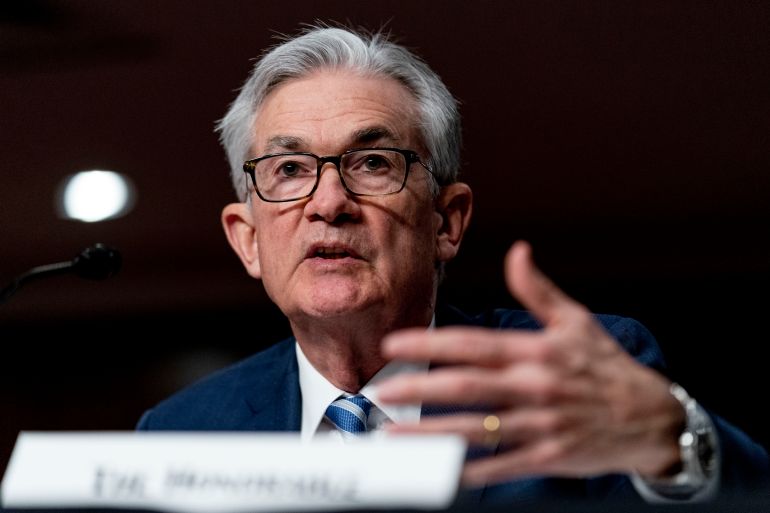Fed sees 3 rate hikes next year as it pivots to combat inflation
The United States Federal Reserve said it is accelerating the tapering of its easy-money policies and now sees at least three interest rate hikes by the end of 2022.

Easy money is falling out of fashion.
The United States Federal Reserve wrapped up its final policy-setting meeting of the year by announcing it will accelerate the withdrawal of some support it has given the economy during the coronavirus pandemic as its priorities pivot from shoring up the jobs market to keeping a lid on blistering inflation.
Keep reading
list of 4 itemsWhat role do US tech giants play in powering Israeli war crimes?
Jobless engineers, MBAs: The hidden army of Indian election ‘consultants’
ByteDance prefers TikTok shutdown in US over sale: Report
At the end of its two-day meeting on Wednesday, the Fed said it is keeping its benchmark interest rate near zero – where it has been since the opening days of the pandemic – but will speed up its tapering of bond purchases that have helped keep longer-term borrowing costs low.
Starting in January, the Fed will reduce its bond purchases to $60bn a month – half of where they stood at the start of November, and putting the US central bank on track to fully unwind them by the end of March.
The Fed also released fresh projections at the end of its meeting. A majority of Federal Open Market Committee members see at least three separate quarter-of-a-percentage-point interest rate hikes by the end of next year, and all of them see rates rising off their current zero bound.
“We’re phasing out our [bond] purchases more rapidly because with elevated inflation pressures and a rapidly strengthening labour market, the economy no longer needs increasing amounts of policy support,” Fed Chairman Jerome Powell told reporters during a post-meeting press conference.
While Wednesday’s hastier unwinding and more aggressive forecast for rate hikes had been telegraphed by Powell during his testimony before Congress earlier this month, it nevertheless marks a dramatic shift in the Fed’s priorities as disruptions from the pandemic spawn inflation-feeding shortages of raw materials and workers.
Wholesale price inflation hit an all-time high last month, while consumer prices galloped ahead at their fastest pace in nearly 40 years.
Meanwhile, the labour market is experiencing a worker shortage as businesses struggle to fill a near-record number of job openings.
With so many jobs going begging, firms are offering better pay and benefits to lure scarce workers, driving average hourly wages 4.8 percent higher in November compared to the same period a year ago.
The nation’s unemployment rate also fell sharply in November to 4.2 percent as it closes in on its pre-pandemic level of 3.5 percent – a level the Fed now sees the economy reaching next year.
Back in September, policymakers didn’t see the jobs market reaching that benchmark until 2023.
“Compared with the projections made in September, participants have revised their unemployment rate projections noticeably lower for this year and next,” said Powell.
While the US economic recovery is still very much on track, inflationary risks are mounting. And when consumer prices spike sharply – especially for essential purchases that can’t be postponed – it slams low-income households the hardest because it eats up a larger share of their income.
“We understand that high inflation imposes significant hardship, especially on those least able to meet the higher costs of essentials like food, housing and transportation,” said Powell.
The Fed has a tough balancing act ahead. Inflation could spiral out of control if its rate hikes are too timid. But if they’re too aggressive, it could derail the recovery.
The Fed also adjusted its forecast for economic growth this year down to 5.5 percent, compared to its September call for 5.9 percent growth. It also sees its preferred inflation gauge clocking in at 5.3 percent this year – a dramatic increase from its September forecast of 4.2 percent.